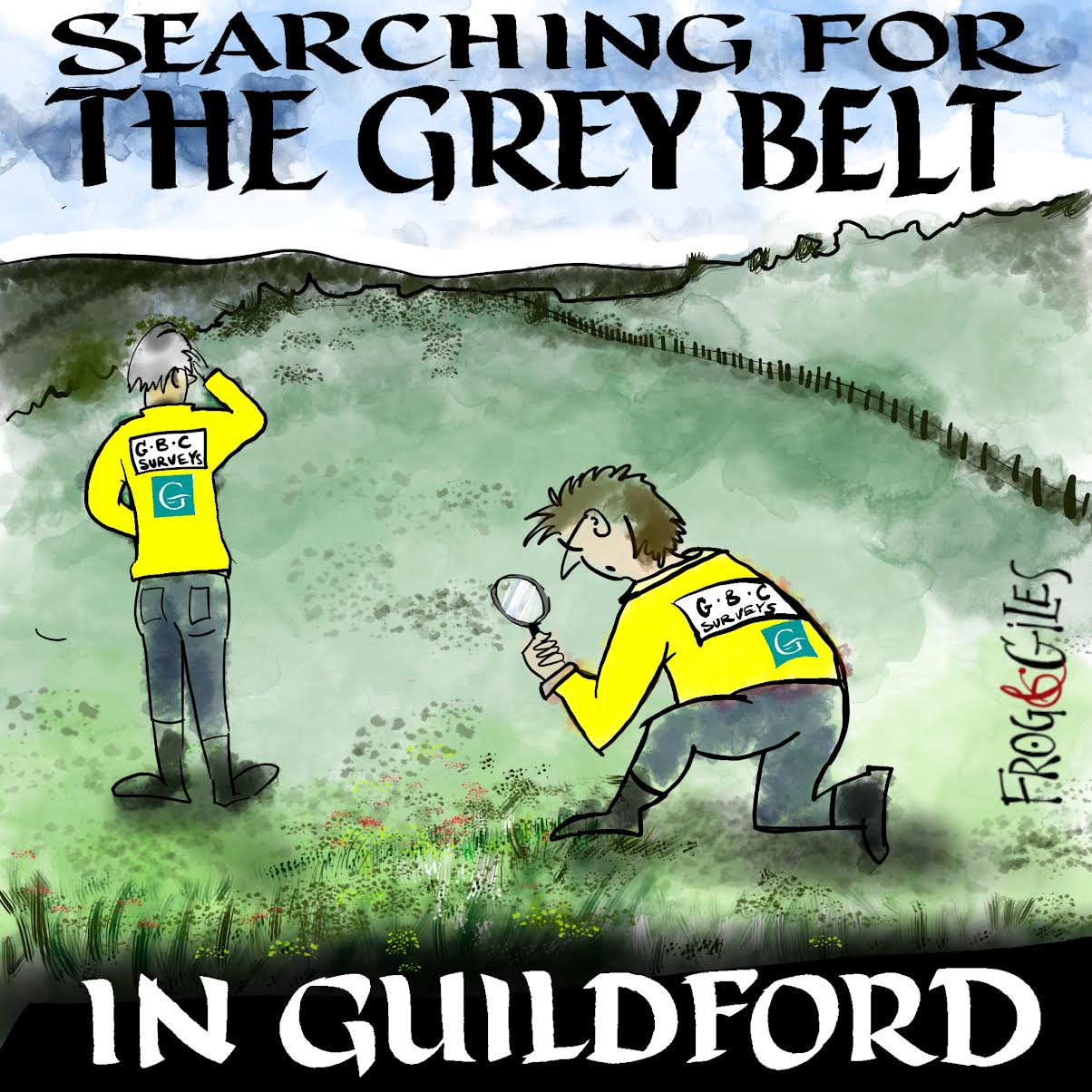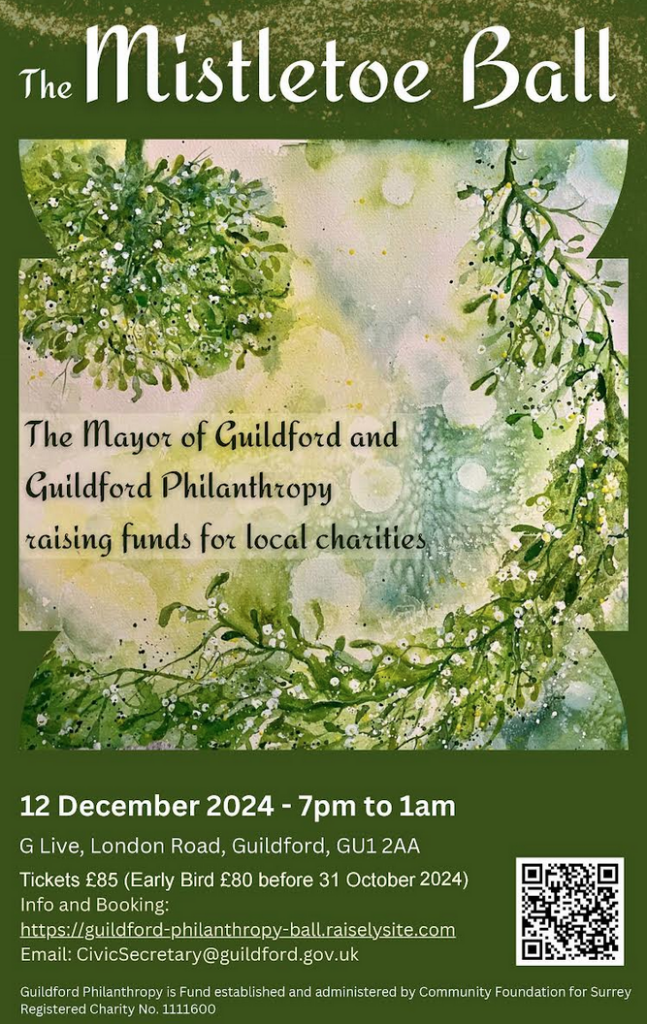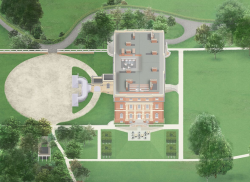 Abraham Lincoln
If given the truth, the people can be depended upon to meet any national crisis...
Abraham Lincoln
If given the truth, the people can be depended upon to meet any national crisis...
 Guildford news...
for Guildford people, brought to you by Guildford reporters - Guildford's own news service
Guildford news...
for Guildford people, brought to you by Guildford reporters - Guildford's own news service
Letter: The NT Plan for Clandon Is Surely A Good Compromise
Published on: 10 Dec, 2017
Updated on: 10 Dec, 2017
In response to: Clandon Park – Earl Unhappy With Winning Restoration Design Concept
The Earl of Onslow passed responsibility for Clandon House to The National Trust in 1956, when the family could not afford to carry out essential roof repairs. This was some years before the current earl was born.
The costs of repairs/renovation will be funded by the insurance claim – the insurance company will presumably not pay out unless the National Trust carries out such work. The NT has an obligation to run its properties in a commercial manner, by attracting paying visitors to the house, garden, shop and restaurant. How many visitors will come to look at a ruin? Perhaps they would if it were in extensive grounds and gardens, but the Onslows kept all but a small area of their estates so the NT has very limited land for this sort of attraction.
I understand that the shell of the building is to remain. Much furniture and other contents were lost in the fire, so it can never be the same as it was. Restoring part of the house to its former glory, accommodating the furniture and pictures saved from the fire, is surely a good compromise. The rest of the building can be used for education, changing exhibitions, and other visitor amenities.
I would welcome a restaurant with wonderful views – the old restaurant in the basement was very noisy and closed-in.
I am sure we all regret the terrible fire, but surely this is an opportunity for a dynamic imaginative solution.
Responses to Letter: The NT Plan for Clandon Is Surely A Good Compromise
Leave a Comment Cancel replyPlease see our comments policy. All comments are moderated and may take time to appear. Full names, or at least initial and surname, must be given.

"Found any?" - "Nope, it all looks green to me!" (See Opinion: The Future is Congested, the Future is Grey)




Recent Articles
- Changes to Borough Council’s Christmas Waste Collection Service
- Mayor Remembers the Cost of War with Guildford’s Twin – Freiburg
- Big Leaf Foundation Wins King’s Award for Voluntary Service
- Notice: Licence Application for Retailing Alcohol at Walnut Unimart
- Letter: I Invite Guildford’s MP to See the ‘Orgy of Housebuilding’ Before Infrastructure Improvements
- Threats to Staff and Fly-tipping Result in Closure of Recycling Centre
- Ash Level Crossing Will Not Close in December, SCC Assures Residents
- Sara Sharif Trial Latest – The Judge Reviews the List of 71 Injuries Found on Sara
- Column: Guildford’s MP Writes – Championing the Needs of Guildford and Our Villages
- City Win at Last With Three Penalties in Cup Tie


Recent Comments
- Jim Allen on Ash Level Crossing Will Not Close in December, SCC Assures Residents
- Olly Azad on City Win at Last With Three Penalties in Cup Tie
- Warren Gill on Ash Level Crossing Row: GBC Rejects Cabinet Member’s Statement As ‘Factually Incorrect’
- Olly Azad on Heartbreak for City Again as Two Extra-time Goals Snatch Victory
- Brian Holt on Heartbreak for City Again as Two Extra-time Goals Snatch Victory
- Helen Skinner on County Council Cabinet Confirms Its Decision on London Road Scheme
Search in Site
Media Gallery
Dragon Interview: Local Artist Leaves Her Mark At One of England’s Most Historic Buildings
January 21, 2023 / No Comment / Read MoreDragon Interview: Lib Dem Planning Chair: ‘Current Policy Doesn’t Work for Local People’
January 19, 2023 / No Comment / Read MoreA3 Tunnel in Guildford ‘Necessary’ for New Homes, Says Guildford’s MP
January 10, 2023 / No Comment / Read More‘Madness’ for London Road Scheme to Go Ahead Against ‘Huge Opposition’, Says SCC Leader
January 6, 2023 / No Comment / Read MoreCouncillor’s Son Starts Campaign for More Consultation on North Street Plan
December 30, 2022 / No Comment / Read MoreCounty Council Climbs Down Over London Road Works – Further ‘Engagement’ Period Announced
December 14, 2022 / No Comment / Read MoreDragon Interview: GBC Reaction to the Government’s Expected Decision to Relax Housing Targets
December 7, 2022 / No Comment / Read MoreHow Can Our Town Centre Businesses Recover? Watch the Shop Front Debate
May 18, 2020 / No Comment / Read More







John Perkins
December 10, 2017 at 6:30 pm
This correspondent and an earlier one supporting the scheme miss the point – nobody actually wants a ruin. Rather it’s simply that it’s not easy to see much soul in the new NT scheme. It looks like just another concrete and glass case from which to view the old bricks while sipping tea.
Martin Elliott
December 12, 2017 at 5:15 pm
“The costs of repairs/renovation will be funded by the insurance claim”. Interesting, especially with recent serious incidents. Insurance usually requires adequate fire precautions to be in place.
Fires are often a series of events any one of which can prevent/stop fire spread. The report by Surrey Fire and Rescue ( https://www.surreycc.gov.uk/people-and-community/surrey-fire-and-rescue/surrey-fire-and-rescue-services-fire-investigation-report-clandon-park ) clearly identified three things:
1) Repeated tripping of electrical equipment
2) Overheating fuse box
3) Lack of firestop in electrical ducting.
Some of these were identified in a fire audit report but had not been rectified. These parallel other earlier serious fires in National Trust properties. NT has claimed all outstanding fire audit deficiencies at their properties have been rectified. Sounds like an admission that such deficient fire protection was endemic and cultural. Given that both loss adjustors and those who had loaned artefacts (for safe keeping) will be very interesting.
As a public NGO (non-governmental organisation) NT is thought to be run to best quality standards, but it seems perhaps they don’t pay as much attention to the boring details as they should.
A spokesperson for NT responded: “The National Trust’s insurers confirmed that the trust was covered for the fire and is working with us to rebuild Clandon Park. The Surrey Fire and Rescue Service’s subsequent investigation report identified the cause and spread of the fire and no action was taken by the service further to that report.”